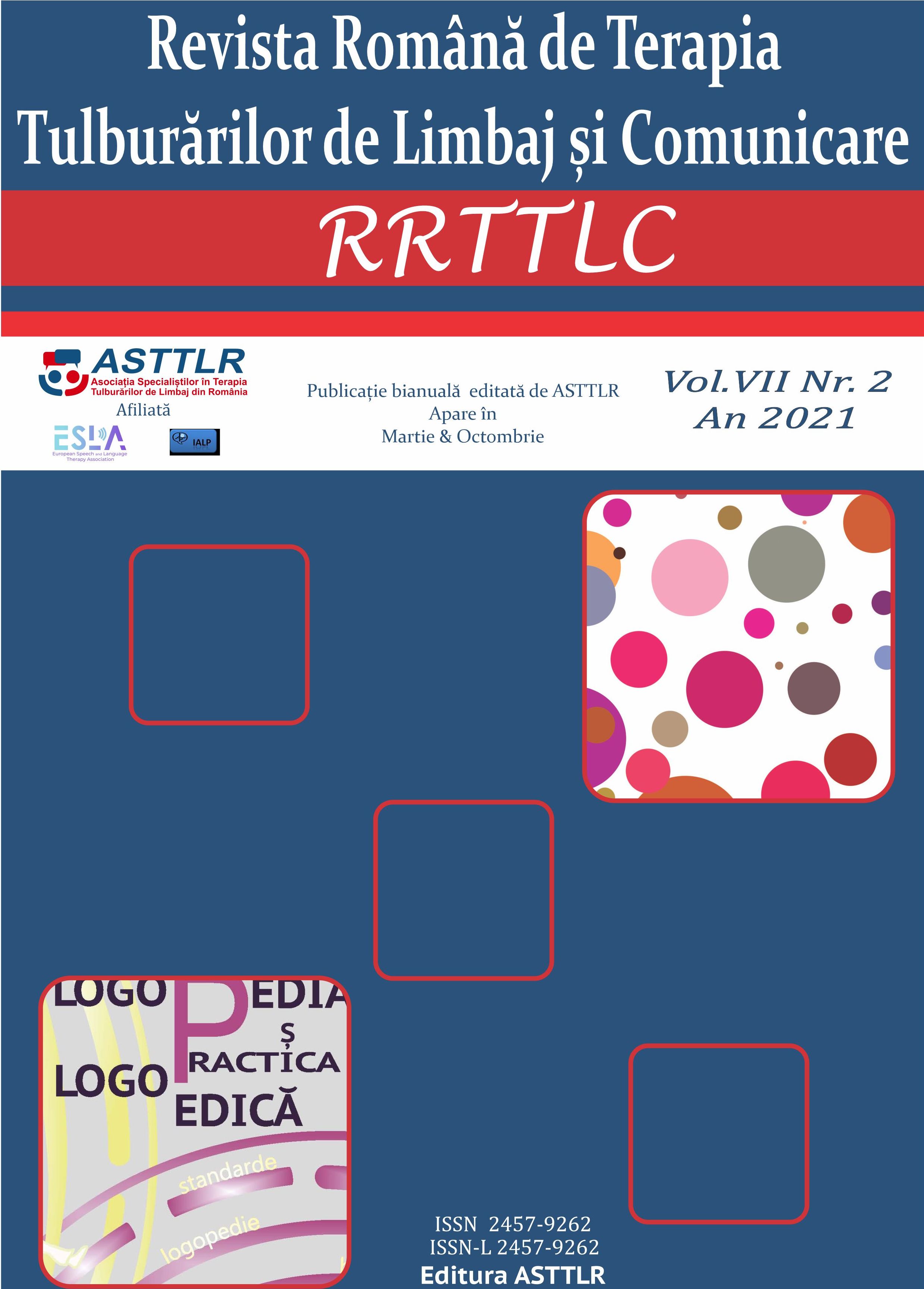Logopedia-considerații praxiologice: interogații, bune practice și intervenție bazată pe dovezi științifice
SLT- practical aspects: inquiries, good practices and evidence based interventions
Author(s): Ovidiu TudoreanSubject(s): Phonetics / Phonology, Language acquisition, Pragmatics, Pedagogy
Published by: Asociația Specialiștilor în Terapia Tulburărilor de Limbaj din România
Keywords: Romanian speech therapy; language disorders prevalence; language tests; evidence-based practice; guides for developing language and communication skills;
Summary/Abstract: INTRODUCTION: Although speech therapy in Romania has a tradition of over 70 years, the practice in the field is in a full process of affirmation and clarification. The initial training system and some professional organizations contribute to the updating and dissemination of standards and good practices in the field. OBJECTIVES: This paper aims to describe some aspects of Romanian speech therapy practice and to draw attention to some discrepancies in the reporting of language and communication disorders. Some suggestions on concrete ways of intervention and evidence-based speech therapy are also offered. METHODS: (1) The statistical data reported by the Iași Inter-School Speech Therapy Center between 2011 and 2020 were analyzed. The data are compared with those available internationally. (2) Two children groups were considered: one diagnosed with developmental language disorder (DLD) (n = 67) and another diagnosed with language delay (LD) (n = 57), aged between 3 and 12 years (M = 5 years 8 months). Tests were used to establish the psychological language age, active and passive vocabulary, record the phonetic inventory and language samples analysis (LSA) for qualitative observations. RESULTS: (1) Statistical data reveal a concordance of reports for speech sound disorders. There are major discrepancies for the other language and communication disorders. Causal explanations and potential directions for remedying this situation are proposed.(2) A statistical analysis (Student’s t test) was conducted in order to compare the children in LD and DLD groups. The data obtained from this analysis along with LSA indicate that the language skills differ between the two groups on the following aspects: lexical, pragmatic, semantic, syntactic, morphological and phonological. Significant differences (p<0.05) occur for onset speech therapy age, phonological disorder, passive vocabulary and language psychological age. Results for active vocabulary did not indicate statistical difference between LD and DLD children. CONCLUSIONS: Explorations reveal a situation with potential negative consequences on children with language and communication disorders. It is desirable to ensure a consensus among practitioners, from the identification phase to the construction of the remediation plan. The use of guidelines for language development and communication skills can contribute to a unitary and effective practice. The study is a prospective one, this issue being subject for further exhaustive approaches.
Journal: Revista Română de Terapia Tulburărilor de Limbaj şi Comunicare
- Issue Year: VII/2021
- Issue No: 2
- Page Range: 27-37
- Page Count: 11
- Language: Romanian

